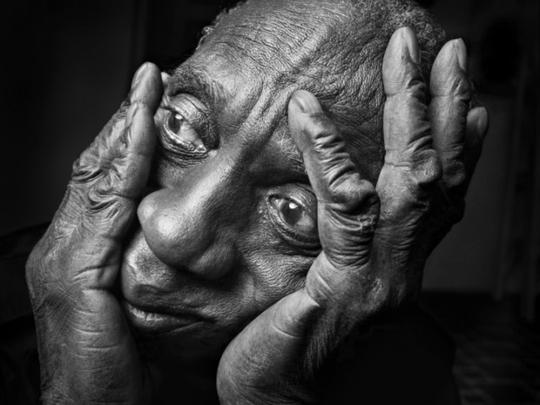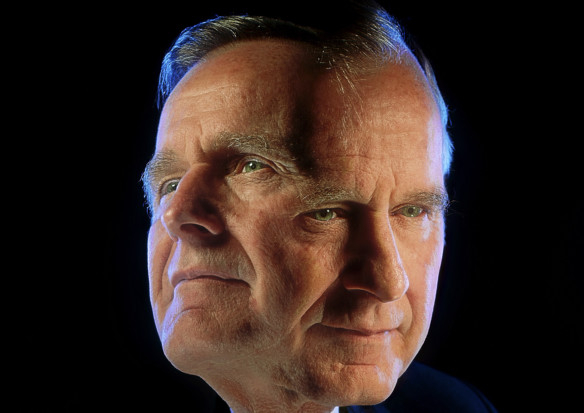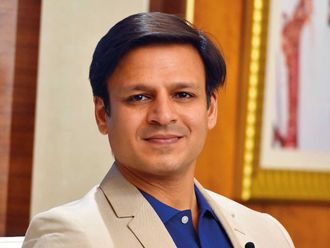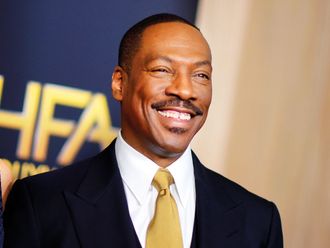
Gregory Heisler is one of the leading photographers of our times. His work is published in prestigious publications such as LIFE, Sports Illustrated and Fortune, and he has shot over 70 cover portraits for Time Magazine. The American photographer is presenting some of his most iconic images in an exhibition titled “50 Portraits”, which features all 50 photographs included in his latest book of the same name. Heisler’s subjects range from Yasser Arafat and Mohammad Ali to Hillary Clinton and Julia Roberts. Also on display is his controversial portrait of American president George H. W. Bush, which resulted in his White House clearance being temporarily revoked.
Heisler was in Dubai for the opening of the show, and recounted the interesting stories behind some of the portraits, highlighting the planning and effort that goes into creating his powerful, unforgettable images.
“I do not seek to flatter my subjects but to respect them. I want to give them their moment, a moment in which their individuality is heightened, and they can be seen a little more clearly and powerfully. I strive to tailor each image to its subject using different cameras, lighting, techniques and schemes. But when photographing famous people with demanding schedules, I have very little time to do the shoot. Some of these portraits were done in just a few minutes. But I could get the result I wanted because I spent months planning every detail,” he said.
He cited the controversial “two-faced” photograph of president George H. W. Bush that appeared on the cover of Time magazine as the most extreme example of his behind-the-scenes preparation. “This portrait was made before the advent of Photoshop. I photographed the president twice on the same sheet of film using two different cameras and lighting set-ups. Because there was no time to improvise and no room for error, my team and I spent several days in my New York studio working out the lighting, which had to be precisely tailored to allow the two heads to merge seamlessly. Using my assistant as the model, we did several tests and when we finally achieved the desired effect, we made exact measurements to document the positions of the cameras and lights. I drew the outline and shading of the first face on to an acetate overlay on the viewing screen of the first camera, then transferred it to the second camera and sketched the second face on the same acetate. We obtained information about the size of the room in the White House where the shoot would be done and requested all furniture to be removed from it. We had a paper cut to the size of the floor and marked the location of every piece of equipment on it. We had only 15 minutes to set up, and quickly rolled out our paper floor and had just plunked down the equipment in the precisely marked spots, when the president arrived. He posed for the two separate pictures and my acetate outlines helped me to line him up correctly,” Heisler recalled.
“I think the image I created was elegant and distinguished. But the president’s displeasure was perhaps a matter of context. If the cover story had been about his never-ending vigilance or his ability to successfully manage domestic and international affairs, he would have probably appreciated the photograph. But his perception of it was tainted because the ‘Men of the Year’ cover story was a backhanded compliment about his duality as a leader. However, I have no misgivings about this portrait. It was created with great care, and both his faces are beautifully lit and handsomely rendered,” he added.
The process was very different when Heisler photographed actor Hugh Grant for a fashion essay in GQ magazine. “Actors can never be ‘just themselves’ in front of a camera. So a photographer has four choices — accept whatever persona they show you; tell them exactly what to do; distract them with music or conversation; or just hope that something natural happens. I began this shoot by trying to distract Grant and he obliged, hamming it up for the camera. But I was able to capture this authentic moment, while he was waiting for the next lighting set-up, sipping coffee and so lost in thought that he did not even notice me or my assistant who stood outside the window holding the light,” he said.
Jyoti Kalsi is an arts enthusiast based in Dubai.
“50 Portraits” will run at Gulf Photo Plus, Al Quoz, until April 19.














